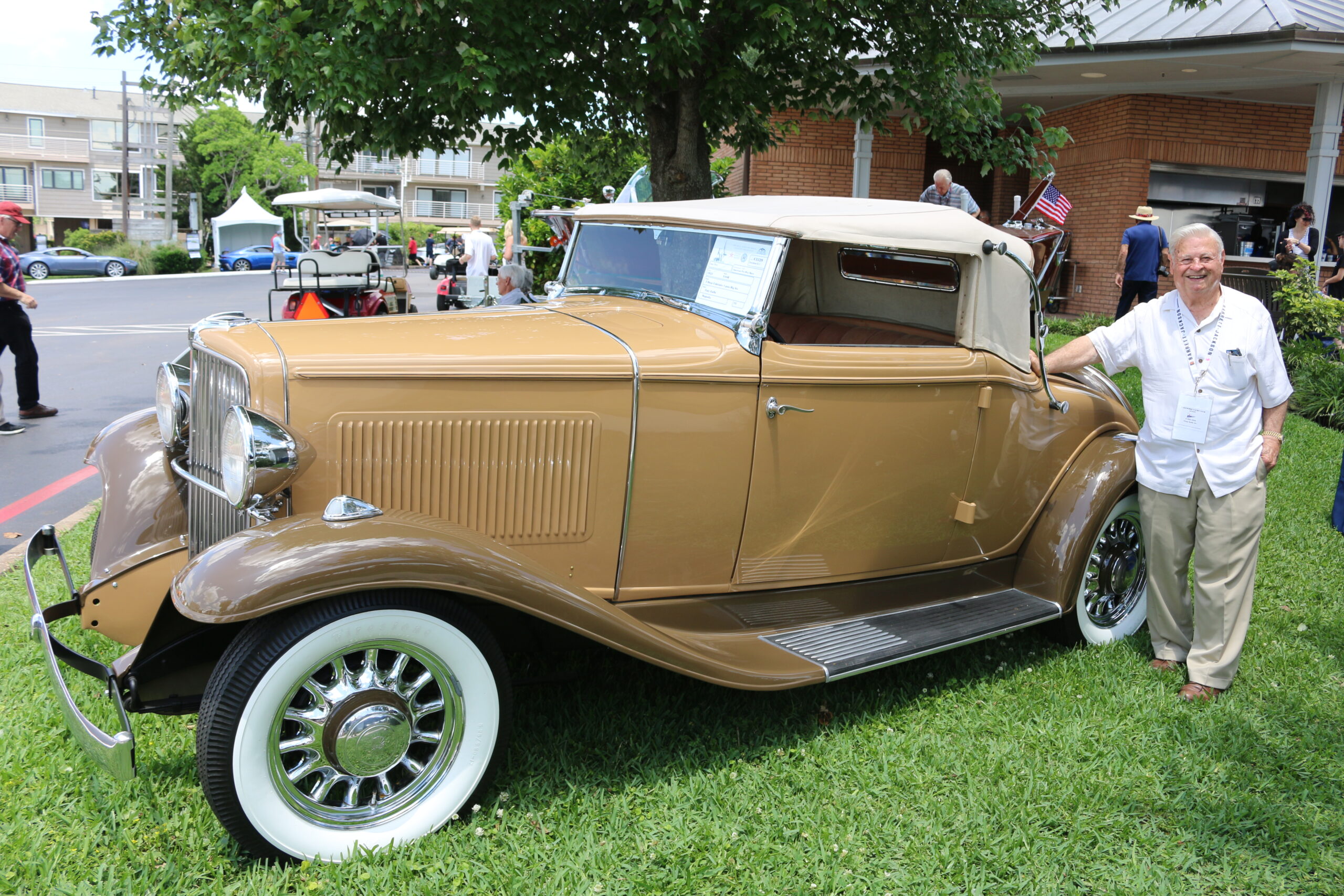


By Greg Riley
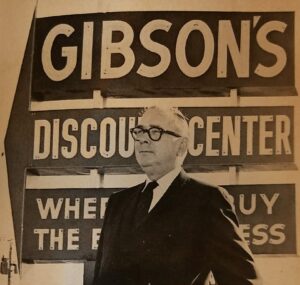
Before Wal-Mart, Target, K-Mart, and Amazon there was Gibson’s Discount Center, at its peak a chain of 684 discount stores primarily in the South, and South-Central U.S. Its founder Herb Gibson was by turns, a streetcar conductor, professional wrestler, barber, carnival barker, and eventually one of American’s most successful retailers heading up a $2,000,000,000 enterprise. Some claim he made countless ordinary people millionaires, and others whisper he was a world-class scoundrel.
I began working for a successful Gibson’s franchisee in Beaumont, Texas in 1978. Our little group had four stores, including two that were over 70,000 sq ft, which were considered monster-sized in their day. My early job stocking shelves at Gibson’s eventually led to a decades long career supplying merchandise to major retailers.
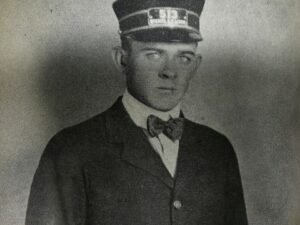
During the peak of the depression in early 1930’s Herbert “H.R.” Gibson was recovering from the demise of his small chain of barber shops and was left with $300 cash and a decent car. Before the crash of 1929 Gibson claims to have been worth $40,000. He made that money at .20 a shave, and .35 a haircut. He relocated to Little Rock, Arkansas in April 1932 and opened what Herb called a “specialty jobbing” business he named The Gibson Novelty Company.
His main business line seems to have been quickly morphed into beauty and barber supplies, and the company was renamed Gibson Products Company. He had recognized the people didn’t have much money, so his business offered small inexpensive sundry items such as hairbrushes, combs, Paulene’s hair oil, and the soon to be famous Gibson razor blades.
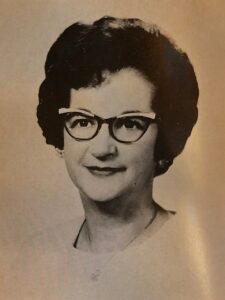
On December 25, 1933, Gibson married Belva Grace Acklin. An avid businessperson herself, she was fully involved in the new family business from its inception. The couple’s five children Herbert Jr, Gerald, Richard, Pauline, and Frances all eventually worked in the company, with two of their sons Herbert Jr. and Gerald becoming company executives.
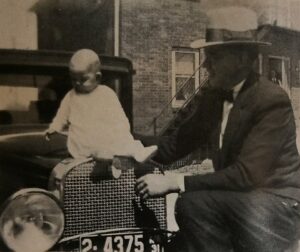
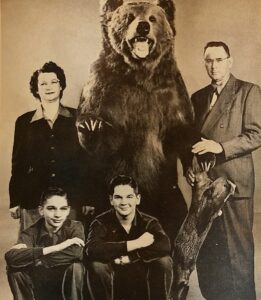
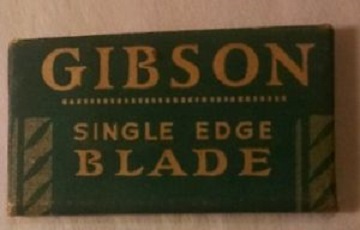
It wasn’t long before Gibson had a number or salesman working for him covering small towns all over Arkansas, soon after Texas, and eventually most other parts of the south as well. These salesmen typically worked out of the trunk of their cars with most small items delivered on the spot. They would arrive in a town and blanket all of the local businesses, and an early version of what we now call B to B sales.
Quoting Gibson, “I started out buyin’ a few aspirin, shoelaces, razor blades, beauty items, and a few things like that. Of course, there was plenty fellers looking for a job, so I had no trouble getting salesman. Before I knew it, I was sellin’ merchandise right ‘n left. That little old buildin’ was a beehive, and party soon was crammed full of merchandise. I had to have more space.” This “more space” by 1958 lead to 34 warehouses.
It wasn’t long after founding his company that the banks stared failing, and Herb’s was totally bankrupt. Soon a national bank holiday was announced. Once again Gibson was pretty much wiped out. This time he had a building full of good sellable merchandise, a platoon of salesman, and most importantly he had developed good-will with his suppliers, some of which who would be with him for the next fifty-odd years.
Once he was full recovered from the banking debacle, Herb like always wanted bigger and better things. Before long he and his family had relocated to Dallas which was the business hub of the Southwest.
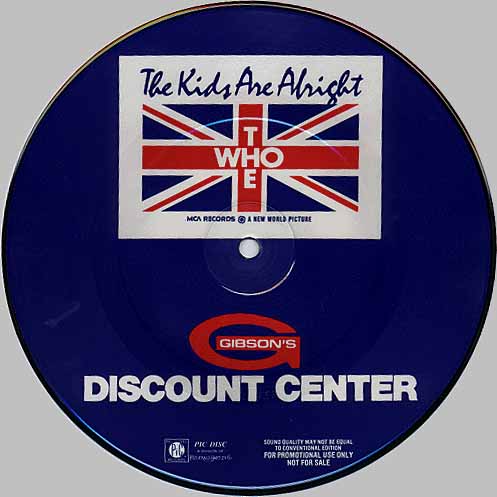
Eventually Herb built a warehouse and headquarters in the small town of Seagoville, Texas. Once there, things really took off for Herb and his Gibson’s Products Co. From 1932 until the late 1950’s things were generally good for Gibson and his wholesale business. By 1948 the Gibson Products Company, was manufacturing shoe polish, drugs, and lotion. Eventually that would include paint, paint brushes, razor blades, and numerous sundries.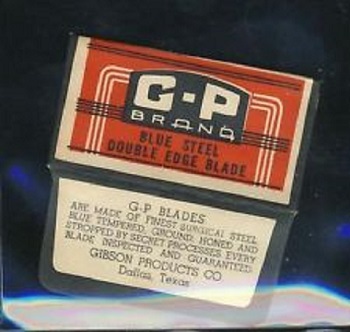
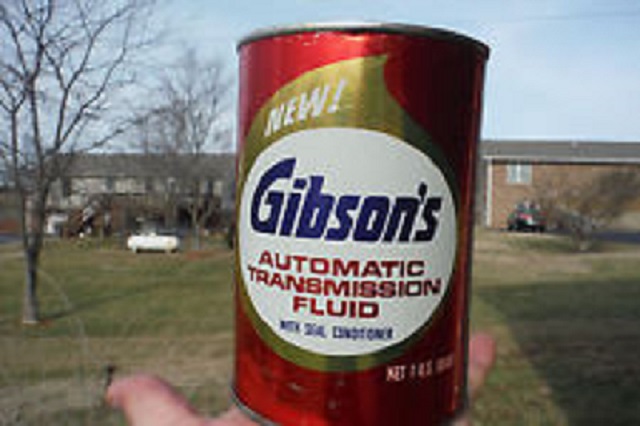
About 1957 Herb noticed a decline in his business that became more and more pronounced. During those times he had no-doubt read about some of the newly minted “discount department stores” retailers such as E.J. Korvette on Long Island. Those first-generation hybrid big-box stores were just coming into their own as a retail force to be reckoned with.
The Korvette’s concept was to offer department store merchandise in a near-warehouse setting at a deep discount. Today this doesn’t seem like a radical concept, but at Korvette’s founding in 1948 this was very controversial. Up until that time manufacturers established a retail price, typically at a 70% gross margin. Mostly retailers sold products at full retail price with occasional discounts or sales.
The discount concept took the published manufactures price and reduced it by a standard amount every day, typically 20-25%. Many department store brands were very resistant to this pricing and merchandising concept, fearing the perceived value of their products would be lessened. Many of the early discount retailers took a smattering of department store merchandise and mixed with cheap goods including many manufacturers “seconds.” This also contributed to the fear that brand identities would be undercut.
Gibson’s had always done things a little differently. A jobber or wholesaler also worked on a discount from the MSRP. The wholesaler typically made 20%, and the retailer about 50%. Today many manufacturer’s prices are still based on the 50-20 concept. Gibson had always prospered just fine on that slim 20% margin. Gibson began considering an entirely different type of pricing structure. His idea was to take the most stripped-down manufacturer cost and mark it up a moderate amount typically between 25% and 40%. This is the same pricing structure major brick and mortar retailers like Wal-Mart and Target use today.
By this time Gibson had established “wholesale houses” in many different cities, and had long-standing relationship with many local retailers, some of which who would some become his franchisee’s.
He wondered what would happen if he opened his various wholesale houses to the public at similar margins? According to Gibson’s biography there had up until then been a Texas law preventing the public from buying wholesale. A retailer’s license was required to buy at such low prices. It seems that the law was changed or amended in the late 1950’s allowing Gibson to try a grand experiment.
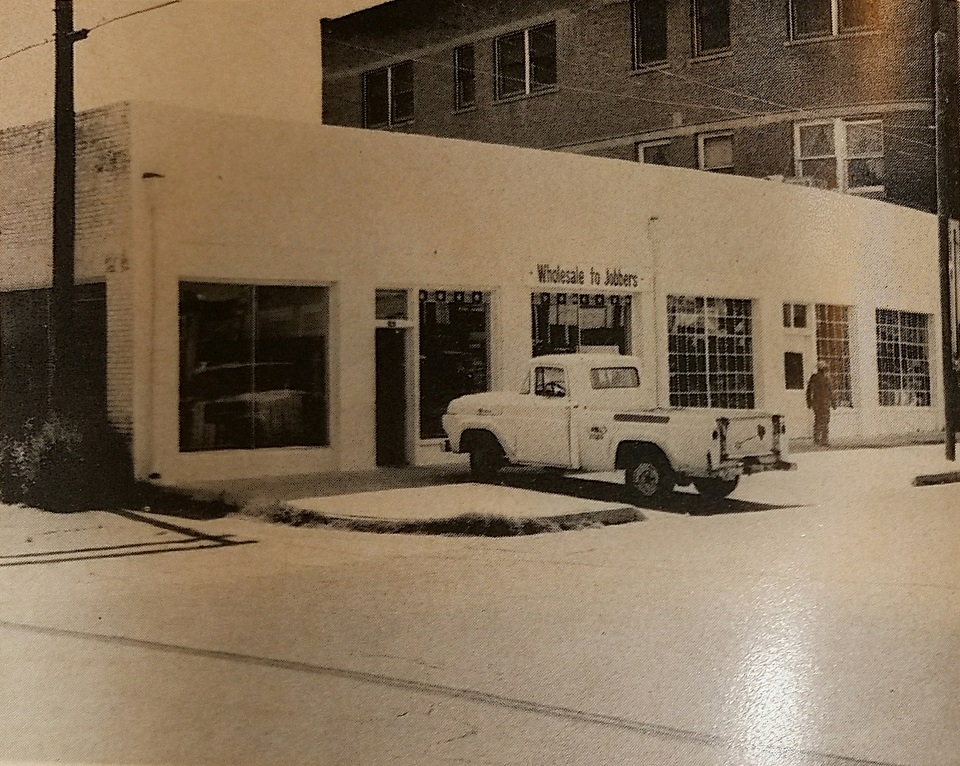
One of his most successful wholesale houses was in what was called “the old Buick building” in Abilene, Texas. In March 1958 Gibson began making some changes so that merchandise could be shown in a more consumer friendly manner. In total the building was about 11,000 sq ft, and Gibson told his son and son-in-law to begin converting the building for retail operations.
They allocated about 3,000 sq ft of the space for retail, thinking they was ample space. Gibson had gone down to the Abilene Reporter-News and purchase a full page add for $160, which he thought a tremendous expense at the time. The store opened the day after the ad ran, and no one could have anticipated the response.
The ad said, “Mr. Consumer, for so many years we have been selling merchandise in this vicinity at wholesale prices. Today you can buy it at the same price we have been selling to the retail merchants.”
Quoting Gibson again, “Abilene had about 85,000 people at that time. I do believe everybody in town tried to come down to the store at the same time. Believe me—you couldn’t even park with half a mile of the place, and I had to park several blocks away myself.”
“People was walking over each other. You’ve never seen such a mad scramble as we had. Them people pounced on that merchandise like a duck on a June bug. I shook my head ‘n told my manager and my son that as quick as this storm is over to go the work knocking out the inside walls and let’s turn this whole building into a retail selling space—all of it!”
He immediately called his Lubbock manager and told him to prepare to do the same thing. This time Herb was ready. He had rented an adjacent space and opened in Lubbock with a for-real discount store. While all of this was going on he was constantly checking Abilene like a mother hen. Many predicted this immediate success was some sort of flash-in-the-pan. However, day after day the crowds just kept coming and coming.
It wasn’t long before Gibson was making plans for his first brand-new from-the-ground-up discount store of a whopping 26,000 sq ft. Friends, family and business associates all told him had lost his mind, and he’d be bankrupt in nothing flat. Herb just kept checking the sales numbers which got bigger and bigger each day. Once again, when the store opened it was mobbed, and stayed mobbed day after day after day.
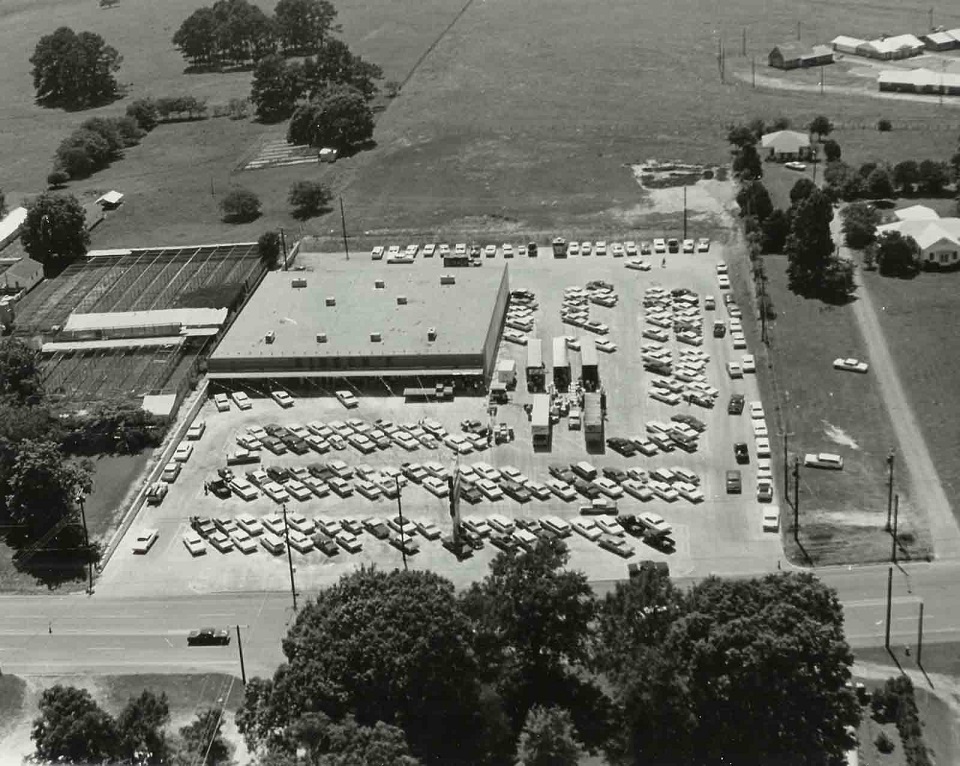
From that time on each new store was bigger and bigger. It wasn’t long before all of the Gibson’s Products Co. wholesale warehouses were either closed or converted to a brand new Gibson’s Discount Center. A number of Herb’s old wholesale customers wanted in on the act, and many became franchisees. before long the number of store opening was like the proverbial hockey stick.
From that one store in 1958, a short few years later there were over 700 Gibson’s Discount Centers from coast to coast and in Hawaii, and Guam too! For a time, things were fantastic for everyone involved, but significant new challenges were on the horizon.
Gibson’s supplied merchandise to their stores in two different manors. Regular turn items could be purchased on a weekly truck from the Gibson’s warehouse. But the major part of the concept was based on purchasing large quantities directly from the manufacturer to get the best possible pricing. This led to the establishing of the Gibson’s Trade Show.
This was basically like a big carnival where the company owned stores, and the franchisers gathered several times a year to make large pool purchase. Gibson’s added a small percentage to all the purchases to cover administrative costs and make a small profit. This was in addition to the monthly franchise fee that was paid to the organization. In turn the manufacturers paid a booth rental to participate in the trade show.
For years this worked very well for all concerned. At some point Gibson decided that wasn’t enough. I’ve often speculated that despite the tremendous growth Gibson’s operation wasn’t particularly profitable. Soon Gibson began to demand that in addition to the markup he was adding, and the booth rental that they manufacture should pay him a percentage. Unfortunately, we would know call that a “kick-back” and it is at best quasi-legal. This also created issues with the appointed manufactures agents or representatives who are paid a commission on all products sold to a reseller. The only way to pay Gibson the cut he demanded was to either raise prices or cut the agents commission.
Before long franchisees, manufacturers, and agents were all up in arms with lawsuits being the predictable outcome. Gibson was soon sued by several his most important franchisees and the court cases and FTC complaints would linger for almost 15 years. At a time when the U.S. economy was facing unparalleled challenges, and new threats such as Wal-Mart were on the horizon Gibson’s was beginning to implode in a mess of recrimination and lawsuits.
By that time Herb Gibson was an old man of 82 years and his sons were minding the store so to speak. Years before a young Sam Walton had tried to obtain a meeting with Herb Gibson with the idea of obtaining a Gibson’s franchise. In one of the worst decisions in U.S. business history Gibson refused to even meet with Walton. Walton seethed over the snub and began making plans for his own discount store; Wal-Mart.
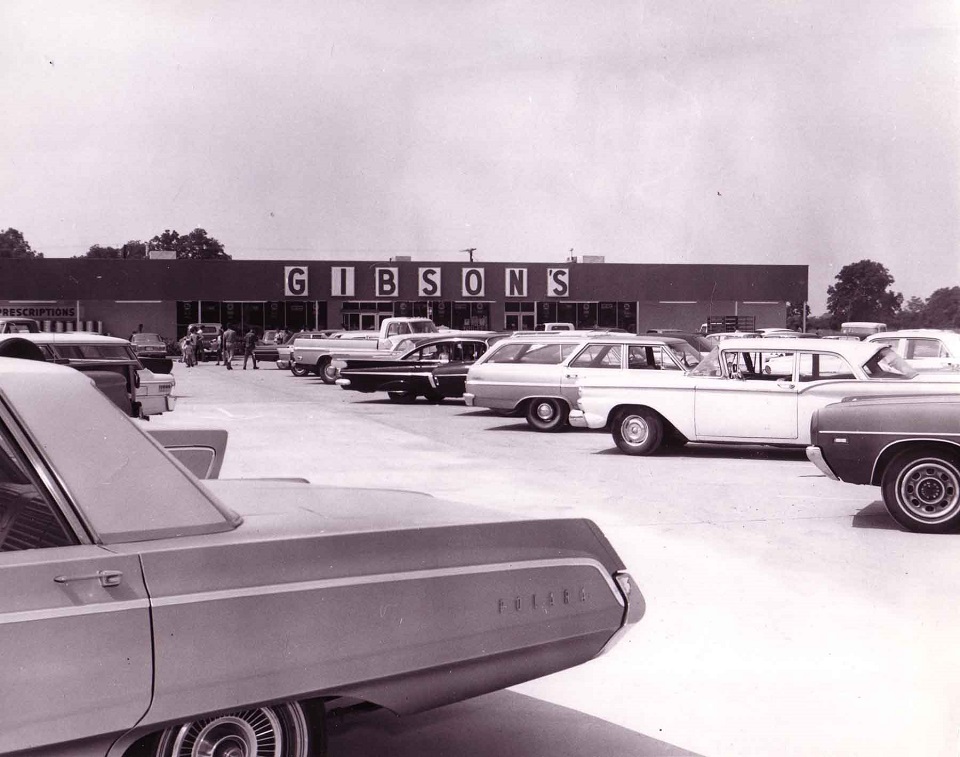
Herb Gibson was from NW Arkansas where Sam Walton was based with his five and ten cent stores. In fact, Herb was born in Berryville, Arkansas a short distance from Walton’s Bentonville, Arkansas base. Gibson had his own stores in Arkansas, including Berryville. Walton was seriously angry and Gibson and made it his mission to best Gibson’s in everything they did. Naturally Walton chose Berryville for his very first Wal-Mart store in 1962.
Over the years much has been made of how Sam Walton used a private plane as an important tool to expand Wal-Mart. Like many of his ideas Walton “borrowed” the idea from Herb Gibson who managed his burgeoning empire from a classy MU2 Turboprop airplane as early as 1965.
Trouble may have been on the distant horizon, but for the moment it seemed that Gibson’s could do no wrong. Between the opening of that first store in 1958 and 1969 the chain expanded at an explosive rate, with approximately 700 stores wearing the Gibson name in 1968. A bit of quick math shows that during that time an average of six Gibson’s stores a month opened.
On July 1, 1965 Gibson’s opened a retail behemoth in Abilene of 96,000 sq ft. A far cry from that first tiny little wholesale house, on the day is opened it was likely the largest discount store in the U.S. H.R. was on hand that day. At the close of the day, he reported $300,620.88 had been “sent to the bank.” In 2018 dollars, that’s $2.17 million.
An estimated 60,000 people visited the store the first day. Cars spilled out of the 500-space parking lot onto the many vacant lots surrounding the building. Traffic moved at a snail’s despite the efforts of 10 policemen. Traffic was no problem for Belva and Mayor W. Lee Byrd, who arrived at the site via helicopter.
To promote the simultaneous opening of seven Dallas-area Gibson stores in 1966, Gibson and his associates shuttled among the stores in a fleet of six helicopters, a tactic that generated widespread publicity and again huge sales receipts.

So ‘ol Herb must have been feeling pretty darn cocky those first few years. Sales and store openings had expanded at a furious pace. Gibson was turning people away to become his franchisee’s. But major hurdles were on the horizon and soon Gibson would face some of the most challenging times in his career.
Comments are closed.
Greg, I remember Gibson’s in Beaumont when I was growing up. I think it was on 11th street. Thanks for the interesting article!
Greg you were a good dedicated employee……. so many of our old workers have passed away. It was always good to see them and talk of the good old days….
Reed, that means a lot to me. There has been lots of water under the bridge but I never forgot Gibson’s.
My husband was advertising manager for Gibson’s in early 1960’s in Abilene. I have a picture of my children at one of those trade shows and I remember going to Mr. Gibson’s house in Seagoville when we had a party at the Dallas country club. Long time ago ?
I’d love to see any pictures you’d like to share. Part 3 is about the employees and what is was like to work for Gibson’s
Greg: My name is Penelope Pepper Arnold and I am the grandaughter of H.R. Gibson. My mom, Polly Gibson Pepper is his daughter. My mom (Polly Pepper) passed away a little over a year ago on June 11, 2019. Her mom was not Belva though. Grandaddy Gibson married my grandmother Dalta Gibson of Little Rock Arkansas in 1920 and they had my mom in September 1930. Grandad went on to marry Belva 3 years later in 1933 and they had Herbie, Richard and Gerald. H.R. and my grandmother Gibson had a barber shop together and named their beauty products after my mom, “Pauline Hair products” to name a few and they would deliver their products in a delivery truck with moms name on the side of it. I have a miniature homemade wood replica of that truck I got from my grandfather and Belva. I also have several original pics of different stores they had as well as pics from different trade shows.
Penelope, very nice to make your acquaintance and thanks for the clarifications. I never heard before that Polly wasn’t Belva’s child. and never knew Gibson had been married before. Gibson’s has always been a big part of my life, and I know it’s been important to lots of other folks too. Interestingly, I was with a recent ex-Wal-Mart executive earlier in the week, and they didn’t know anything at all about H.R. and Sam Walton.
My grandmother and I worked at Rack Supplies in Seagoville in the late 70’s. That was my first real job punching a time clock at age 14. My job was stocking and shipping orders of 8 track tapes and albums. I later worked for HBLA on Duncanville Road driving a truck delivering motor oil in cases to auto parts stores in DFW. I always admired the business smarts of Herb and I know I learned a lot from watching things he did. I’ve done OK in business but not as good as he did.
The things I learned working at Gibson’s has support my family for over thirty years. I first worked in hardware and automotive and was later buyer for Radio & Records and School Supplies. I’ve remained in the school supply business for decades.
Greg, were you a buyer from the office in Seagoville or from one of the franchise stores?
Margaret, I worked for the Beaumont group from 1978-1991
Can’t wait to see Part 3…..I worked at Gibson’s in Abilene.
My mother was Herb Jr’s Secretary for about 20-25 years. I have pictures but I’ll have to dig them out. I spent a lot of time at the Seagoville offices. I worked in the print shop every time there was a trade show helping coalate an glue huge amounts of order forms for all the vendors. Then during the trade shows I worked for various vendors filling out the order forms. After I graduated from high school I went to work in the accounting office. I didn’t last long I wanted to work in Dallas tired of the small town life.
Penny, I would love to see any photos you might locate for use in part 3!
I worked at the Gibsons store on the north end of Beaumont Texas from 1977-1978 and loved it. I remember the district manager I think his name was Mr Showstall . He was like a general in the military. I remember that he had a beach house that he rented out in Chrystal Beach Texas. I made $3.30 an hour and worked 40 hours per week and attended Forest Park High School.
Yes, Adrian Shoefstall…he passed away a few year ago. He was a retired Marine Corps drill instructor.
We had a Gibson’s located in Newton, Kansas. It was the first business to offer my father a job after returning from the Vietnam War. This would have been in 67 to 68. I remember my parents buying our school clothes from Gibson’s and they sold Dickies. Well, in the mid 80s everyone wanted to wear Levi Button Flies. Nope we got Dickies like it or not. I refused. My dickies got sent through a piece of farm equipment before they even got a chance.
Today kids want to wear Dickies and Levi Button Flies have all but gone away. I remember the day they closed the store in Newton Kansas. Sad sad sad
Thanks for sharing you story!
I remember the Gibson’s on Guam in the 1980’s. I now live in Dodge City and was here for the store’s final demise. The name still lives on in Gibson’s Pharmacy. Though it has different owners, the pharmacy remained at Gibson’s location until the pharmacy recently built a new building.
Kathie, I always love hearing Gibson’s stories. I had planned to do one more part of the story, but I have some new information so I’m writing two more! Check back soon to read them. GR
Greg
My husband and I along with my 2 kids own the Gibson’s in Weatherford TX. I staring working there at 16 years old. I meet my husband at the store and my kids have pretty much grown up in the store. Thank you so much for writing about the history I learned so much from you ! I would love to post the complete story in the store when you finish part 3 and 4. That is our sign with our phone number in part 2. That was so cool to see that part of Gibson’s in your story. I remember the trade shows. Thank you so much for sharing your stories.
Tammy, nice to meet you. My wife and I also met at Gibson’s in Beaumont in 1989. I’ve been to your store a few times and it always brings back great memories. I’ll e-mail you the text and you are welcome to post of share however you like. H.R.’s granddaughter sent me some wonderful photos of the trade show, and an autographed copy of the book This Man Gibson.
GR
My husband and I met in 1981. Our store manager meet his wife at the store too. I would love to meet you and your wife next time your in our store. Please let me know when your out this way and I will make sure to be there. Bring those photos of the trade show with you too please. I would like to see them.
We will definitely come for a visit in the near future!
I worked at Gibson’s in Ogden, Utah in 1959-1961. Mr. and Mrs. Huber were my bosses.
Susan, glad to meet you – GR
Greg, I worked at Gibson’s on south 11th Street in 1967-69 while attending Lamar. Do you remember the name of the franchisee/manager of that store? I can’t recall it but they were great people. I started at the service desk (like everyone else), moved over the electronics and the record department (coolest job) and ended up working up in the office. Like you, many of the things I learned at Gibson’s has stayed with me. My granddaughter has asked me about my first job and it is a delight to tell her about Gibson’s. Now, if I could just remember the manager’s name. Can you help me?
Marty, the stores was originally owned by Streetman, Anderson, and Worley. It was later bought by the Nichols family. The GM for many years was Adrian Shoefstall. Maurice Browning was part of the team, as well as Jerry Boynton. There were others, but those are the names that immediately come to mind.
My dad was manager in Abilene on N 1st and also Judge Ely. I worked at Barrow St store around 1978, and at Judge Ely around 1980 while in high school.
Gregg great articles about the Gibson’s! My first job was at the Gibson’s Store in Richardson, Texas 1967-73. Marvin Vincent Store Mgr. then later Mike Cole. I was assigned on occasion to deliver black socks for HR Gibson Sr. from our store all of the way to the Gibson’s home in Oak Cliff by Ok Cliff CC.
They sent me because they were afraid of Belva who had a reputation of firing any employee that she felt was not doing a good job on the spot to deliver the socks for Herb Sr. to their home.
I was only about 17-18 and I remember Mrs. Gibson being very gracious and nice and invited me into their home and asked if I wanted something to drink.
I did this several times deliver items to the Gibson’s home and I never told the managers that sent me that Mrs. Gibson was as sweet and nice as a person could be! Your articles brought back great memories!
Michael, Glad you enjoyed, and great anecdote about Belva!
Cool article! I remember Gibson stores from back in the day. I do want to point out one error, however. The first Wal-Mart was opened in 1962 but it was in Rogers, Arkansas rather than Berryville as stated in the article. The building still stands at the corner of Walnut and 8th St. and is now an antique store.
Duncan, thanks for your correction. I’ll make the change to the piece – GR
This is so informative.
My Gibson’s memories include the cushy rubber mat at the store entrance. It was fun to walk across.
My sister got a new Dodge Dart Swinger and the horn was in the steering wheel. She squeezed to hard in the Gibson’s parking lot and profusely apologized to the people for accidentally honking at them.
Darragh,
Glad you enjoyed it. Writing this was quite a walk down memory lane for me.
GR
Greg, wasn’t there a split in Gibson franchises in its later years? I remember the names of several changing in several east Texas Gibson stores. Soon afterward there would be a new Gibson store built close by the one that changed it’s name???
The only thing I’m aware of involves Wests and Pamida. The West family changed the name of all of their stores to West Gibsons, and Pamida just dropped the Gibsons name all together. Chaffin Inc. eventually bought the rights and tried to revive the chain, but ultimately it didn’t work. Im unaware of anyone opening competing stores (except WM.)
I grew up going to gibsons in Pratt Kansas they sold warm roasted cashews and the whole store had that awesome odor. Also had an aunt who worked in hays kansas in early 70s what great memories.
I worked at Gibsons from 1975 till 1979 It was a great place to work and also attend Lamar university. They were very supportive of workers who were juggling work and school. The Nichols brothers and Mr Shoefstall were first class employers.Great Memories Dr Kyle Bess
It was indeed a great place to work. I am still in frequent communication with the Nichols via FB, but I understand that Mr. Shoefstall passed a few years ago.
GR
Gibson’s McAllen TX .and Memphis TX I bought my first electric guitar. there white building.still there .1976.I work cotton fields hall County.